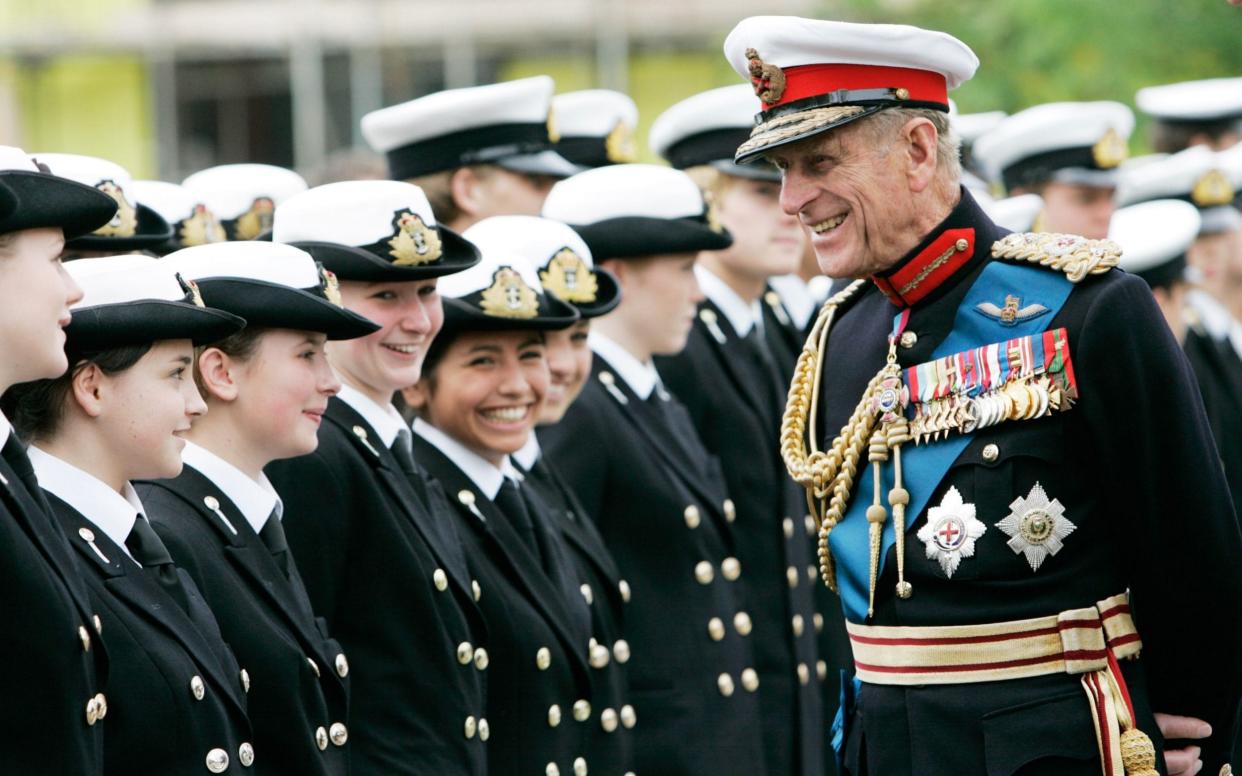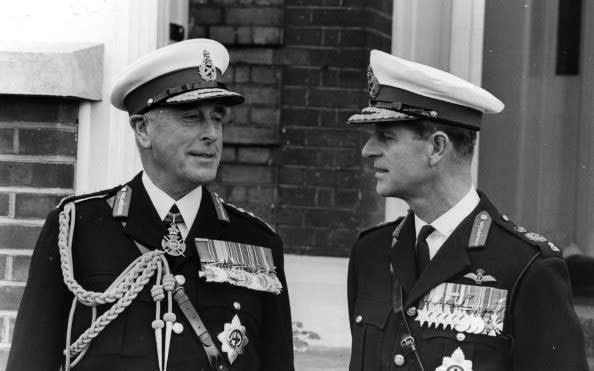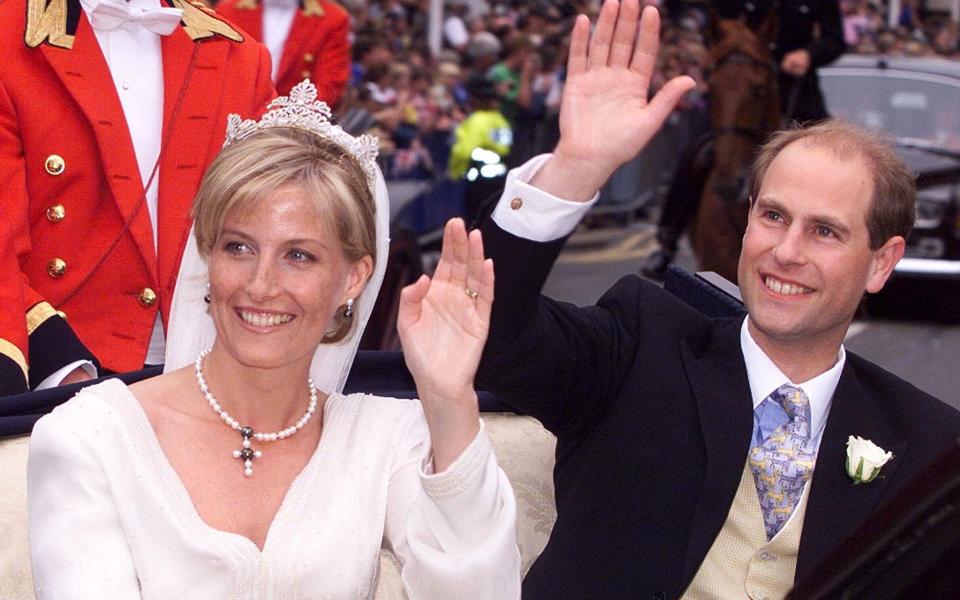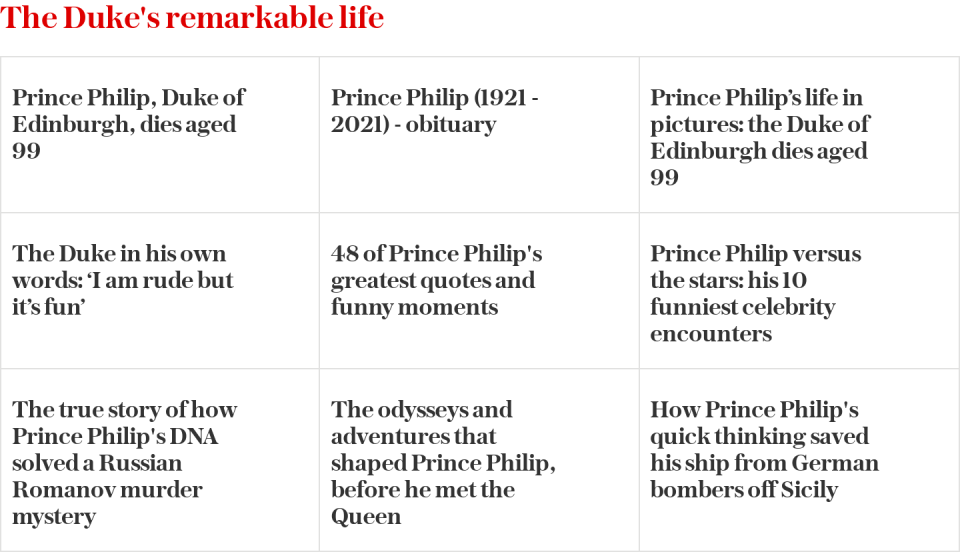The unusual history – and fascinating future – of the Duke of Edinburgh title

- Oops!Something went wrong.Please try again later.
- Oops!Something went wrong.Please try again later.
On November 19, 1947, the day before his marriage to Princess Elizabeth, Prince Philip received the title ‘The Duke of Edinburgh’ from his future father-in-law, George VI.
He was also given the subsidiary titles, Earl of Merioneth and Baron Greenwich, but it’s the title of Duke of Edinburgh that was closest to his heart.
It wasn’t as if Prince Philip was new to titles. In 1921, he was born Prince Philip of Greece and Denmark, thanks to his patrilineal descent from George I of Greece and Christian IX of Denmark, and was in line to both thrones on his birth. In 1947, he renounced his Danish and Greek royal titles as a reflection of his almost inevitable future role as husband of the Queen of the United Kingdom.
In his 74 years as Duke of Edinburgh, he made the title far more famous and distinguished than any of the title’s previous holders.
Thanks to his 1956 founding of the Duke of Edinburgh’s Award, the world’s leading youth achievement award – often shortened simply to ‘D of E’ – it has also become synonymous with adventure.
Such was his affection for the title that, when the Queen came to the throne in 1952 and the complicated question arose as to what the new royal house should be called, it was said Philip wanted the name to be the House of Edinburgh.
The Duke’s maternal uncle, Earl Mountbatten, was keen on the House of Mountbatten, after his own line. Winston Churchill insisted that the name Windsor be kept.

And so, according to legend, Prince Philip declared, “I am nothing but a bloody amoeba. I am the only man in the country not allowed to give his name to his own children.”
In 1960, the Queen declared that Mountbatten-Windsor would be the surname of her male-line descendants, who aren’t princes, princesses or Royal Highnesses. Because Mountbatten was adopted from his maternal bloodline, Prince Philip then had some effect on the royal surname.
And what now becomes of the title of Duke of Edinburgh, after his sad death?
The short answer is that it is automatically inherited by Prince Charles, as his eldest son. With his great affection both for his father and for Scotland, Prince Charles will be honoured to bear the title.
But it’s not a title he will carry forever. As with so many arcane rituals of the monarchy, the title of Duke of Edinburgh follows an unusual line of succession.
When a new monarch comes to the throne, their pre-existing titles are said to ‘merge in the Crown’, meaning the titles no longer exist. But the monarch is free to make a new ‘creation’ of those titles – the ‘Duke of Edinburgh’ has had three creations since it was first bestowed in 1726.
All this means that the title of Duke of Edinburgh will be newly created for Prince Edward when it merges in the Crown – that is, when Charles becomes king.
Before Prince Edward married Sophie Rhys-Jones in 1999, he was made Earl of Wessex. It was also announced that he would, in time, become Duke of Edinburgh.

It would be particularly appropriate, given not only Prince Edward’s closeness to his father but also his role in the Duke of Edinburgh’s International Award. Prince Edward is chairman of its committee, and has done much to promote the institution. He has himself won the award’s gold medal for a 60-mile, four-day walk in Scotland.
Earlier this year, he appeared on Sky News to talk about the importance of the award during the pandemic, saying: “We mind desperately about trying to help [children] catch up with their academic career but at the end of the day we’re talking about what can we give young people at this time that’s really going to help them in the future – and how are they going to be ready for the world. And that’s not just about academics.”
As Duke of Edinburgh, Prince Edward will strengthen his connections with the award. It will also give him a more significant role within the Royal Family. Now that Prince Andrew and Prince Harry have been largely ruled out of royal duties, Prince Edward will be of increasing importance in assisting first his mother, and then his eldest brother.
The history of previous Dukes of Edinburgh is as fascinating as the future of the title is promising.
The title was created in 1726, when George I made his grandson Prince Frederick the first Duke of Edinburgh. George I died in 1727, meaning Frederick also became Prince of Wales.
Frederick, nicknamed ‘Griff’, wasn’t just given the title of Duke of Edinburgh by his grandfather. He was also Marquess of the Isle of Ely, Earl of Eltham, Viscount of Launceston and Baron Snowdon.
The first Duke of Edinburgh led a largely unfulfilled life, estranged from his parents, George II and Queen Caroline. He only came to England in 1728, already 21 and a native German-speaker. He was a wild one, keen on wine, women and gambling. But he had a cultured side, too, backing the Opera of the Nobility in London and playing the cello and the viola. He was also interested in science and painting, though his comedy, written under the name Captain Bodkin, was a flop at the Drury Lane Theatre in 1731. More successful was the song written by Thomas Arne for the Duke and performed at Cliveden, Berkshire, his country home, in 1740 – Rule, Britannia!.
Frederick nearly married another Lady Diana Spencer (a relation, in fact, of Diana, Princess of Wales), the Earl of Sunderland’s daughter. But, after the first Prime Minister, Sir Robert Walpole, and the King disapproved of the match, he married a German aristocrat, Augusta of Saxe-Gotha, who was only 16. Handel provided the wedding music.
Forever borrowing money, the first Duke of Edinburgh became an increasing source of annoyance to his father. The feeling was intensified when he whisked the pregnant Augusta out of Hampton Court in the middle of the night, so that George I and the Queen couldn’t witness the birth, as was the royal custom.
But the first Duke of Edinburgh was never to make it to the throne. He died of a lung injury, aged only 44, in 1751, when his father, George II, was king. The legend was that Prince Frederick, a keen cricket fan, died from a blow to his lungs from a cricket ball.
His son, Prince George, inherited his title as Duke of Edinburgh in 1751, and kept it until 1760 when he became George III and his titles merged with the Crown. He was Duke of Edinburgh between the ages of 12 and 22. At 21, he fell for Lady Sarah Lennox, the Duke of Richmond’s sister but George II was keener that he should marry the German princess, Sophie Caroline of Brunswick-Wolfenbüttel. Instead, after he came to the throne, he married another German princess, Charlotte of Mecklenburg-Strelitz. It was a notably happy marriage, with 15 children – until he started suffering his cruel mental illness.
Over a century later, in 1866, Queen Victoria created the title for a second time for her second son, Prince Alfred, when he was 21. He had a particular affection for Edinburgh, having studied violin in the city.
A naval officer, this Duke of Edinburgh was shot while on duty in Sydney in 1868 by a would-be political assassin. He survived and, six years later, married the Grand Duchess Maria Alexandrovna of Russia, daughter of Tsar Alexander II.
He was the only Duke of Edinburgh of the second creation. That’s because his son, another Prince Alfred, shot himself in 1899 in anguish over a mistress. He died a fortnight later, aged 24. His father died in 1900, aged 55, and the title became extinct.

It was only in 1947, when the sad tale of the heir to the last Duke of Edinburgh had faded into the mists of time, that the title was eventually revived for Prince Philip.
As the last Duchess of Edinburgh, the Queen, too, holds the title dear. Until she acceded to the throne in 1952, the future Queen was styled “HRH the Princess Elizabeth, Duchess of Edinburgh”.
It will be some comfort to our monarch that, on losing her beloved Duke of Edinburgh, another Duke of Edinburgh, her eldest son, will be close by – and that, after her death, the title will live on in her youngest son.
Harry Mount is author of How England Made the English (Penguin)

